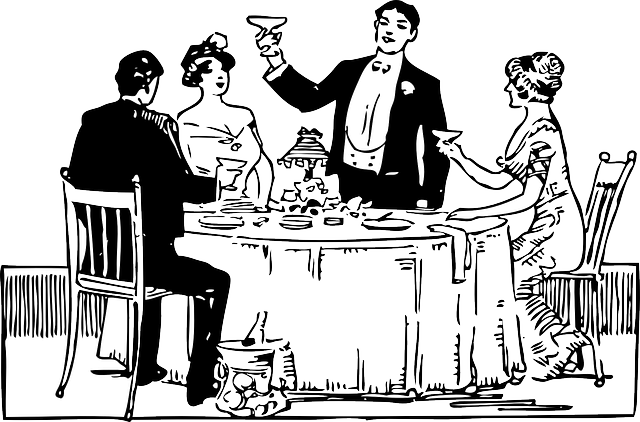When writing a story, one of the most important aspects is creating a plot. But what exactly is a plot? This blog post will look at what incidents, reactions, and climaxes are and how they work together to create a cohesive story.
Every good story needs all three elements to succeed. So start plotting your next masterpiece!
The concept of a plot and what it entails
A good plot is essential to a good story. The plot structure gives the story its shape and purpose; without it, a story is likely to be aimless and directionless. By understanding what a plot is and what elements it is made up of, we can ensure that our stories are well-structured and enjoyable to read.
A plot is not simply a sequence of events that happen to the characters; it is the characters’ reaction to those events and how they change. In other words, the basic plot is what happens, and the story is how the characters deal with what happens.
A plot is the sequence of events that take place in a story. It is what drives the narrative forward and keeps readers engaged. A well-crafted plot will have several elements, including incidents, reactions, and climaxes. Let’s take a closer look at each one of these.
Incidents
Incidents are the events that take place in a story structure
Incidents happen to the characters in the story; they are the challenges and obstacles they must overcome.
Some stories will have more incidents than others, but all good plots will have at least a few critical incidents, each of which builds upon the last to create a sense of momentum that moves the story along.
An incident in a thriller plot, for example, can be anything that throws the protagonist’s life into chaos and forces them to take action. Here are a few examples:
– A break-in or home invasion
– A natural disaster such as a tornado, hurricane, or earthquake
– Discovering a secret conspiracy that threatens national security or global stability
– The protagonist is in danger and must escape a ruthless killer
– The antagonist has something the protagonist wants and will stop at nothing to get it
– A shocking secret is uncovered that could destroy everything the protagonist believes in
– A loved one is kidnapped or held hostage
– The protagonist’s safety is in jeopardy
– Double crosses and betrayal abound
Reactions

Reactions are how characters respond to the incidents in their lives
Reactions are what give a story its emotional heart. Reactions help to create a sense of tension and conflict and ultimately lead to the story’s climax. Readers want to see how characters react to the challenges they face, whether it be with courage, humour, or determination.
A good plot will have characters that readers can empathize with and root for. We should care about what happens to them and their reactions should reflect this. A plot with no action and no reaction is likely flat and uninteresting.
For example, if a villain is chasing them, they might be scared out of their mind and just trying to survive. Or, if they’re the ones doing the chasing, they might be pumped full of adrenaline and ready to take down their prey.
In general, though, some examples of reactions a character might have in a thriller plot could include: feeling paranoid and constantly looking over their shoulder; being jumpy at any little noise; having trouble sleeping; feeling edgy and on edge all the time; being hypervigilant; communicating only in hushed tones; sweating all the time; trembling or shaking; having a hard time breathing; and so on.
These are just a few examples, but you get the idea.
Climaxes

Climaxes are the resolutions of the story plot structure
The climax is the turning point of a story when all of the tension and conflict come to a head. It is the most exciting part when the protagonist must face their biggest challenge, making a story exciting and suspenseful.
How climaxes are important to a story’s plot
A well-crafted climax will leave readers satisfied with how the story turned out, even if it wasn’t what they expected. It is the payoff for all the tension that has been built up throughout the story.
Climaxes are important because they give readers a sense of resolution and closure. Often, what happens in the climax will determine the story’s outcome. For example, in a tragedy, the climax is usually when the protagonist makes a fatal mistake that leads to their downfall.
In a comedy, the climax is when everything comes together for the main character, and they finally get what they want. It is the moment of triumph before the story wraps up.
To summarize what we’ve learned about plots, here are a few examples from famous stories
In The Odyssey, the climax comes when Odysseus must defeat the Cyclops. A classic example of an external conflict where the protagonist must face a physical challenge.
In Romeo and Juliet, the climax is when Romeo kills himself, thinking Juliet is dead. An example of an internal conflict is where the protagonist is battling with his own emotions.
The plot of Harry Potter and the Sorcerer’s Stone revolves around Harry defeating Voldemort. This is another example of an external conflict, but it also includes elements of internal conflict, as Harry must overcome his fears to succeed.
As you can see, there are many different plots, but they all share one common goal: to create conflict and tension that will keep the reader engaged.
So, next time you’re brainstorming a story idea, think about what kind of conflict you want to explore. Will it be internal or external? Will it be physical or mental? The possibilities are endless!
Tips on how to create better plots for your writing endeavours

If you’re not sure what kind of plot you want to write, look at some classic novels or popular movies
Studying other examples gives you a better feel for what makes a good story plot.
For instance, the plot of Pride and Prejudice centers around the conflict between Elizabeth Bennet and Mr. Darcy. In contrast, the plot of The Hunger Games revolves around Katniss Everdeen’s fight to survive in the arena.
Forrest Gump: A classic story of an underdog, Forrest Gump (Tom Hanks) follows our titular character through some of the most defining moments of the 20th century. Through it all, Forrest remains ever-optimistic, and his love for Jenny (Robin Wright) never wavers.
The Dark Knight: After the death of District Attorney Harvey Dent (Aaron Eckhart), Batman (Christian Bale) takes the fall to protect Dent’s legacy. This sets off a chain of events that leads to the ultimate showdown between Batman and The Joker (Heath Ledger).
In Forrest Gump, the inciting incident is when Jenny returns to Forrest’s life, and he decides to follow her. In The Dark Knight, the inciting incident is Harvey Dent’s death. Both stories have multiple incidents and reactions before finally reaching their climaxes.
The Shawshank Redemption: When wrongfully convicted of murder, Andy Dufresne (Tim Robbins) is sentenced to life in Shawshank State Penitentiary. Over the next two decades, he befriends fellow inmate Red (Morgan Freeman) and slowly adjusts to life behind bars. However, when an opportunity for escape finally presents itself, Andy must decide whether to risk his newfound freedom or remain incarcerated.
The Catcher in the Rye: Holden is kicked out of school and runs away from home, eventually ending up in New York City.
To Kill a Mockingbird: Scout and Jem are raised in the deep south during the 1930s, and must learn how to deal with racism and injustice.
The Great Gatsby: Jay Gatsby pursues Daisy Buchanan against all odds, only to be disappointed when she leaves him for Tom Buchanan.
If you’re having trouble coming up with your own story, here are a few more tips to get you started:
– Think about what kind of conflict your protagonist will face. Then think of the main plot elements – the conflict can be an internal conflict, like a personal struggle or battle with addiction, or an external conflict, like a physical challenge or fight against a villain.
– Brainstorm a few possible inciting incidents. These are the events that set your story in motion and help to establish the conflict.
– Ask yourself what reactions your characters will have to the incidents and conflicts they face. Will they rise to the challenge or crumble under pressure?
– What is the climax of your story when the conflict is resolved, for better or worse?
Keep these elements in mind as you plot out your story, and you’ll be well on your way to writing a novel that keeps readers turning pages.
With these plot elements in mind, you should be well on your way to plotting out an unforgettable story!
Here’s a quick outline of what a typical thriller might look like:
- The story opens with an intriguing hook that grabs the reader’s attention and throws them into the middle of the action.
- We meet the protagonist (main character) and get a glimpse into their world.
- Something throws their life into chaos (this is the inciting incident).
- The protagonist is now on a mission to find out what happened (or to stop something from happening).
- In the rising action, the protagonist is pursued every step of the way by shadowy figures who are after whatever it is . . .
As the story progresses, more and more pieces of the puzzle come together, and the stakes get higher and higher until everything comes to a head in an explosive finale.
In conclusion
The plot is the skeleton of your story. It gives your writing structure and helps you organize your thoughts. By understanding the different plot parts, you can create an interesting and engaging account for your readers. Whether you’re starting from scratch or looking to revise an existing work, knowing how to identify and use the critical elements of a plot will make all the difference.
So, what have we learned? First, we’ve learned that a plot comprises incidents, reactions, and climaxes. These three elements work together to form a cohesive story. If you’re not sure what kind of plot you want to write, try looking at some famous stories and examining their structure. Once you understand the basics of plotting, you can start planning your own great story.
If you’re working on your first novel and are looking for more help with your writing, please check out my other articles at https://ullahakanson.com/blog/
Best of luck!
Ulla

